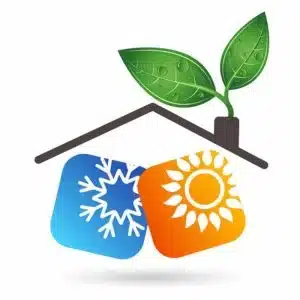
Heating Tips For Your Home
Weatherize Your Home: This is one of the best ways to keep heat from leaking out of your home. Look for cracks and holes in your foundation, doorways, and windows. Consider weather stripping or caulking drafty areas to keep heat from escaping. If you aren’t sure where to start, call a professional, such as Apollo Heating and Air Conditioning to give you an energy audit on your home.
Install Double or triple pane windows: Homes with old windows can result in an increase of 25 percent to heating expenses. Upgrading windows to those made with double-pane glass is a sure way to eliminate this loss of heat.
The U.S. Department of Energy has a list of brands and models of double-pane windows that have been given its Energy Star brand of approval.
Use Fireplace Inserts: You could be losing a large amount of money if you have an older fireplace. Many older fireplaces have open hearths that generate slightly more warm air than they consume. This results in the fireplace being 5 percent to 10 percent energy efficient. This can be resolved by installing a fireplace insert made from steel plates, cast iron and/or glass to make your fireplace more efficient, and perhaps more attractive.
Invest in a Pellet Stove: Pellet stoves are the newest way to heat homes and can save money in the process. This is an ideal, green heating option. And since many are direct-vented, they don’t require a chimney, making them affordable to install. The Environmental Protection Agency rates them among the cleanest-burning heating appliances around and exempts them from smoke-emission testing requirements.
Here are some other viable heating home options that will leave less of a carbon footprint than coal and gas.
Upgrade your existing Heat Pump
Heat pumps are fantastic heating and cooling systems that deliver as much as 300 percent efficiency per electricity consumed when in heating mode. They rival high-efficiency air conditioners when cooling. By upgrading your heat pump with advanced features, you can increase efficiency even more while providing the very best in home comfort for you and your loved ones.
Upgrading your heat pump
The following advanced features are better engineered than their conventional counterparts, and they integrate well with other energy-saving strategies such as zoning systems and programmable thermostats.
Two-stage compressors pump the precise amount of refrigerant through the heat pump to meet your heating or cooling needs. This promotes the most efficient heat exchange possible from the refrigerant – the magic of heat pump efficiency. By implementing variable compressing speeds, it minimizes wear and tear on the compressor, and significantly reduces noise.
Variable-speed air handlers use less energy, last longer, and offer quieter operation than conventional air handlers that have only one speed – full blast. Rather than being blasted by hot air in the summer and cold air in the winter when a single-speed air handler powers on, variable-speed air handlers start at low speed, and slowly adjust their velocity to deliver a steady airflow for longer time periods. The continuously low air speed avoids the wasted energy that occurs when your equipment stops for a period, then has to go full blast to reheat or cool your living areas.
Two-stage thermostats are must-have components for homeowners in the Indianapolis area. Two-stage thermostats regulate a heat pump’s heating mode based on outdoor temperatures. Heat pumps are efficient down to about 30 degrees. When the outdoor temperature falls below a certain set-point, usually below freezing, the two-stage thermostat activates backup heating, usually electric resistance coils (though increasingly homeowners are using gas or oil furnaces for relatively inexpensive backup heat). Many homeowners turn down the heat setting while away from home during the day. This saves energy while the thermostat is set back, but when the thermostat is turned back up to a comfortable temperature, the backup heat powers on in conventional heat pumps. If it’s electric backup, this negates any energy savings achieved earlier. A two-stage thermostat can prevent the backup heat from powering on, and utilize the high-efficient heating of the heat pump until the thermostat set-point is reached.
Geothermal Systems
Geothermal heating is both eco-friendly and efficient. Geothermal heating systems work by using temperatures deep underground to heat your home. Because temperatures are a lot warmer in the earth than outside, less energy is used to heat the air. This results in a more efficient heating system, and also lowers the monthly utility bill.
For Geothermal heating, pipes are buried underground, looping back to an indoor heat exchange unit. Water circulates through this loop absorbing the stored heat from the ground. From there, an indoor unit compresses the heat to a higher temperature and the air delivery system will distribute the warm air throughout your home.
Though there can be sizeable upfront costs, Geothermal heating does lower energy expenses and geothermal systems also increase the value of your home. This whole process requires electricity to operate the heat exchanger, which is comprised of a pump, compressor (for the heat exchange) and a fan. Here at Apollo we have IGHSPA certified geo thermal designers and installers, call us
Better for the Environment
Unlike traditional gas heating systems, geothermal HVAC systems do not burn fossil fuel to generate heat. They actually transfer heat from the earth. This heat source is sustainable, does not deplete over time, and is consistently there to be used repeatedly.
Solar Power
Solar power is energy from the sun that is converted into thermal or electrical energy. Solar energy is the cleanest and most abundant renewable energy source available, and the U.S. has some of the richest solar resources in the world.
There are three primary ways to harness solar energy: photovoltaics, solar heating & cooling, and concentrating solar power. Photovoltaics generate electricity directly from sunlight via an electronic process and can be used to power anything from small electronics such as calculators and road signs up to homes and large commercial businesses.
Solar power is also one of the best ways to heat your home! The initial investment can be substantial, nonetheless, you are essentially receiving free energy for the rest of your home’s lifespan.
Solar heating utilizes collectors, normally mounted on a roof and facing southward to concentrate sunlight so that is heats air or liquid that is then pumped around the house. Heat from active solar systems can be used to warm not just living spaces but also your home’s water supply.
Some states provide tax credits and deductions to those homeowners who are incorporating such solar systems. So using solar heat can be both eco-friendly and fiscally beneficial.
Wind Power
Wind power has existed for a long time. But it is not widely known that you can leverage wind to heat homes and commercial buildings. What’s more, you do not need a large windmill to get wind power operating. Wind works in conjunction with a water heater, with the wind providing energy to run the heater.
The one necessity for wind power to work is you must live in an area that receives a good amount of air flow to turn the turbine. Additionally, you need to set up your home like a hydronic system to pump the hot water through, which could add extra costs if your home operates on a traditional forced-air system.
There are three main types of wind energy:
Utility-scale Wind: Wind turbines that range in size from 100 kilowatts to several megawatts, where the electricity is delivered to the power grid and distributed to the end user by electric utilities or power system operators.
Distributed or “Small” Wind: Single small wind turbines below 100 kilowatts that are used to directly power a home, farm or small business and are not connected to the grid.
Offshore Wind: Wind turbines that are erected in large bodies of water, usually on the continental shelf. Offshore wind turbines are larger than land-based turbines and can generate more power.
Hydronic Heat Systems
Hydronic heating works by running hot water in pipes under the floor, through base boards or via radiators that are distributed throughout the home. These systems normally feature a boiler that heats the water — using geothermal or solar power — and a pump that sends the hot water throughout the house.
Eventually, the water runs through a heat exchanger, which transfers the energy into a usable form.
With hydronic heating systems, there are three ways that the heat is converted: radiation, conduction and convection. Each system has its pros and cons, and selecting the right system depends on your home’s layout.



